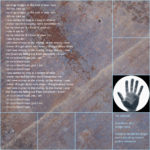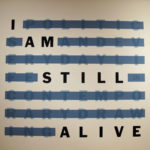some thoughts on design education from charles eames . . .
1977 | charles & ray eames; thinking in the the powers of ten . . .

thoughts on design education from charles eames . . .
that the objective be limited & specfic: the danger in many problems is that limits are so broad that it is impossible for the student to isolate the prime objective & work towards it. this is often responsible for the student seeking originality for its own sake.
that the problems be within the scope of the students’ understanding: when technological, sociological or other aspects of a problem become so complex that they must be ignored, they create in the beginning student a pattern of irresponsible thinking, a habit of faking. if the conditions can be grasped completely, the student can then bring to bear on that problem the whole of his past experience.
that there be some practical basis for evaluating results: to design a problem so that the solution will either stand or fall on some measurable quality is very difficult, but not at all impossible. the great reward is that this approach injects a discipline which prevents evaluations from disintegrating on the level of “i like it – you don’t – so what?’’
text source: american institute of graphic arts, aiga boston journal, the common core:
who we are, what we teach, what we value. ©1996 geoffry fried & douglas scott
posted 24 July 2008
categories education
© visualsyntax. powered by wordpress.








